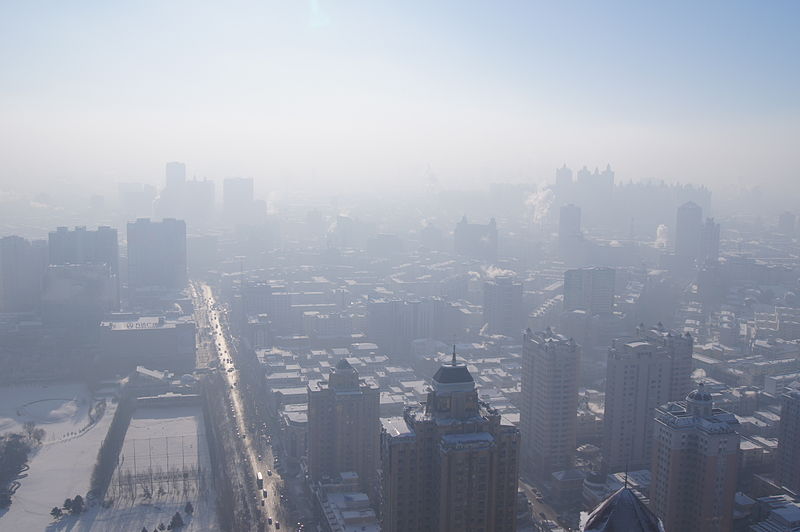This is a story of development – the aid-dependent economy, deep public mistrust in the government, rapid urban migration, and a silent plague that blankets the sky in the cold winter months.
For the 1.5 million people living in Mongolia’s capital city, Ulaanbaatar, the -40°C winters bring with them air pollution levels comparable to, and sometimes surpassing, much larger cities such as Delhi and Beijing. Most statistics attribute 80% of this pollution to household burning of coal. But such a statement conceals underlying structural inadequacies and places too much of the accountability on the poor, who must choose between – put simply – polluting the air and freezing to death.
With no central heating system, coal is cheap and accessible. The latest government measure to curb air pollution levels is the banning of the use and transportation of raw coal and its replacement with government-subsidized refined coal claimed to be twice as efficient. Though implemented in May 2019, the effectiveness of the somewhat radical move is yet to be seen… but it’s off to a rocky start.
Since the dissemination of the refined coal, there have been 549 reports of poisoning and eight deaths.
The below freezing night temperatures of Ulaanbaatar start in late September and early October and signal the beginning of the coal-burning season. Since the dissemination of the refined coal, there have been 549 reports of poisoning and eight deaths, all attributed to carbon monoxide (CO) emissions caused by poor ventilation and inappropriate appliances. Following the incidents, the refined coal has been analyzed in laboratories in China, South Korea, Japan, and Russia.
Such findings raise concerning questions: Why was the refined coal not analyzed prior to dissemination? Why were citizens not informed of the proper use of the new coal?
Some government officials say they gave buyers sufficient warnings about proper burning appliances at coal distribution centers, while others claim they never found any. Whatever the case was, it’s clear that if a household does not own the proper appliances, they are at a risk of CO poisoning and even death.
With no other choice, what is to be done?
There has been a surge of campaigns to “raise awareness for proper use of compressed coal, better ventilation and maintenance of fuel-burning appliances”, and the government plans to install CO detectors in 220 thousand households in the ger district (a district comprised of traditional, Mongolian yurts called ger that primarily burn coal for heating).
These short-term goals only skim the surface of underlying, structural issues and the recent deaths serve as their reflection. Despite being the largest landlocked country, nearly half of the Mongolian population resides in Ulaanbaatar. The past decade has been marked by rapid rural-urban migration of people in search of better professional and educational opportunities. The problem is exacerbated by the effects of climate change on the lives of traditionally nomadic populations who are also taking to the city.
Ulaanbaatar was simply not built for this many people, and the ger was not built for city life. Even subsidized electricity is expensive, and the lack of alternative heating methods has emanated a city culture too reliant on coal.
For much of the past decade, the perceived seasonal nature of pollution has impeded policy implementation and subdued its urgency.
It’s perhaps a case of the collective action problem described by Garrett Hardin, an ecologist who warned us about the serious environmental consequences of individual, innocent actions. The ‘mutual coercion mutually agreed upon’ solution he describes may just be this coal ban. However, the lack of alternatives and poor city infrastructure means there are institutional changes that need to be dealt with in the long-run.
In comparison to its polluted counterparts in India and China, Ulaanbaatar is only visibly polluted during the colder fall and winter months. This means that yearly averages skew the extremity of the crisis, and the sun-shiny, blue-skied summer months provide a false sense of security. For much of the past decade, the perceived seasonal nature of pollution has impeded policy implementation and subdued its urgency.
Though seen as largely a step in the right direction, there is still widespread skepticism, engendered by the previous decade of false promises and failed projects.
Further, local and regional differences in pollution levels have delayed comprehensive action. As coal burning takes place in the most poverty-ridden parts of the city, these areas have the highest pollution levels, making the already vulnerable groups of society even more precarious to health and environmental risks. Until recently, the wealthy have been able to avoid air pollution by moving urban housing developments further south toward a notoriously wealthy district called Zaisan. There may have been vast differences in air quality a couple years back, but it’s now becoming clear that air pollution does not discriminate.
Such structural, economic, and social factors are important to discuss in the long-term. Yet, even in the short term, these have important implications on the failures and successes of the coal ban as Ulaanbaatar enters its first winter with the refined coal. There has been some hope for positive results, with air quality levels significantly better than they were this time last year. But there remains widespread skepticism, engendered by a previous decade of false promises and failed projects. Even more intractable is the issue of completely reforming a sector of the economy, where coal is both a source of heat and income for many, as well as reshaping the attitudes and behaviors of thousands.
Edited by Naya Sophia Moser
Photo credits: “Harbin China Smog” by Fredrick Reubensson. Published 26th of December, 2012. This work was sourced under a Creative Commons Attribution-Share Alike 2.0 Generic. No changes were made.

